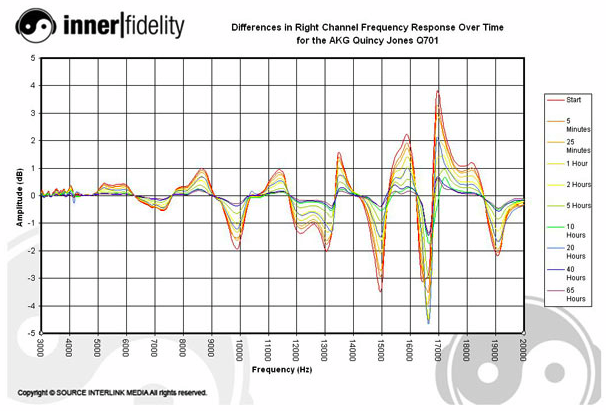I made the same observation about the title. with all the gears, all the sizes, materials, etc. it's a little silly to use one weak experiment on one pair of headphones and call it a final verdict. Tyll certainly didn't say anything of the sort. only OP read what he wanted in the article.
maybe this will look like another attempt to reject facts, but I believe speakers shouldn't be mixed with headphones for this. I happen to believe that speakers do change over time. belief I hold because I've seen consistent evidence suggesting that much on more than one model of driver. but so far I can't say the same for headphones where what little evidence I've seen was unclear or showing tiny changes that could pretty much have come from anywhere. as for IEMs, just the way to measure them has consistently given me more variations than any apparent change in the driver itself. be it on dynamic or balanced armatures.
so I came to think that size does matter. ^_^
also it's fairly obvious that the amplitude of movement, the air that needs to be moved, the forces exercised on the diaphragm, they all tend to be significantly bigger on speakers. so I'd expect mechanical wear to be more noticeable there.
I see speakers as a good case to say that indeed something can happen over time when stuff are pushed and bent, which really nobody can argue against. but it will give a false idea about the magnitudes involved in most headphones. people shouldn't expect the sound of a headphone to somehow clearly transform on a new pair thanks to "burn in". that's just poor thinking given the actual evidence we've had so far.
until I see at least some evidence of the contrary on at least a few pairs, I'll keep suggesting placebo, new toy effect(getting used to the gear and signature), non perfect memory(how dare you?), taking some time to find the best placement on our head, and of course my friends the pads wearing off and maybe conforming a little bit to the shape of our skull over time, as the more relevant and more likely causes of perceived change on headphones and IEMs. and TBH even on speakers, I wouldn't blame driver burn in for my feelings of change in sound. at best I'd admit it can be part of the causes. which is a long way from guys coming here saying "I felt a change in headphone X, so I know burn in is real".






















 . Do you have others, How many headphones have you owned?
. Do you have others, How many headphones have you owned?
